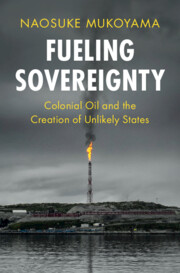Book contents
- Fueling Sovereignty
- LSE International Studies
- Fueling Sovereignty
- Copyright page
- Dedication
- Contents
- Figures
- Tables
- Acknowledgments
- 1 Introduction
- 2 Theory of Separate Independence
- 3 Colonial Oil and Decolonization in Borneo
- 4 Colonial Oil and Decolonization in the Lower Gulf
- 5 Separate Independence in Other Settings
- 6 Varying Historical Impacts of Resource Endowment
- 7 Conclusion
- References
- Index
5 - Separate Independence in Other Settings
Kuwait, West Indies, and South Arabia
Published online by Cambridge University Press: 14 March 2024
- Fueling Sovereignty
- LSE International Studies
- Fueling Sovereignty
- Copyright page
- Dedication
- Contents
- Figures
- Tables
- Acknowledgments
- 1 Introduction
- 2 Theory of Separate Independence
- 3 Colonial Oil and Decolonization in Borneo
- 4 Colonial Oil and Decolonization in the Lower Gulf
- 5 Separate Independence in Other Settings
- 6 Varying Historical Impacts of Resource Endowment
- 7 Conclusion
- References
- Index
Summary
This chapter discusses whether the theoretical framework of this book can explain cases outside of Borneo and the Persian Gulf. Kuwait can readily be explained by the same framework as Qatar and Bahrain. This chapter then analyzes negative cases that meet at least one of the two conditions. It first looks at the West Indies, particularly the case of Trinidad and Tobago. Trinidad was a producer of oil but became part of the West Indies Federation when it was established in 1958, although the federation collapsed four years later. It argues that Trinidad’s initial inclusion into a larger entity can be explained by the absence of the protectorate system. Second, it investigates the case of British protectorates in South Arabia. They had been governed in a similar fashion to lower Gulf sheikhdoms during the colonial period, but many of them had no choice but to join the Federation of South Arabia in 1962. This chapter argues that the difference between those states and successful cases of separate independence lies in the presence of oil. It thus shows that the theory of this book travels to other cases.
- Type
- Chapter
- Information
- Fueling SovereigntyColonial Oil and the Creation of Unlikely States, pp. 138 - 157Publisher: Cambridge University PressPrint publication year: 2024



